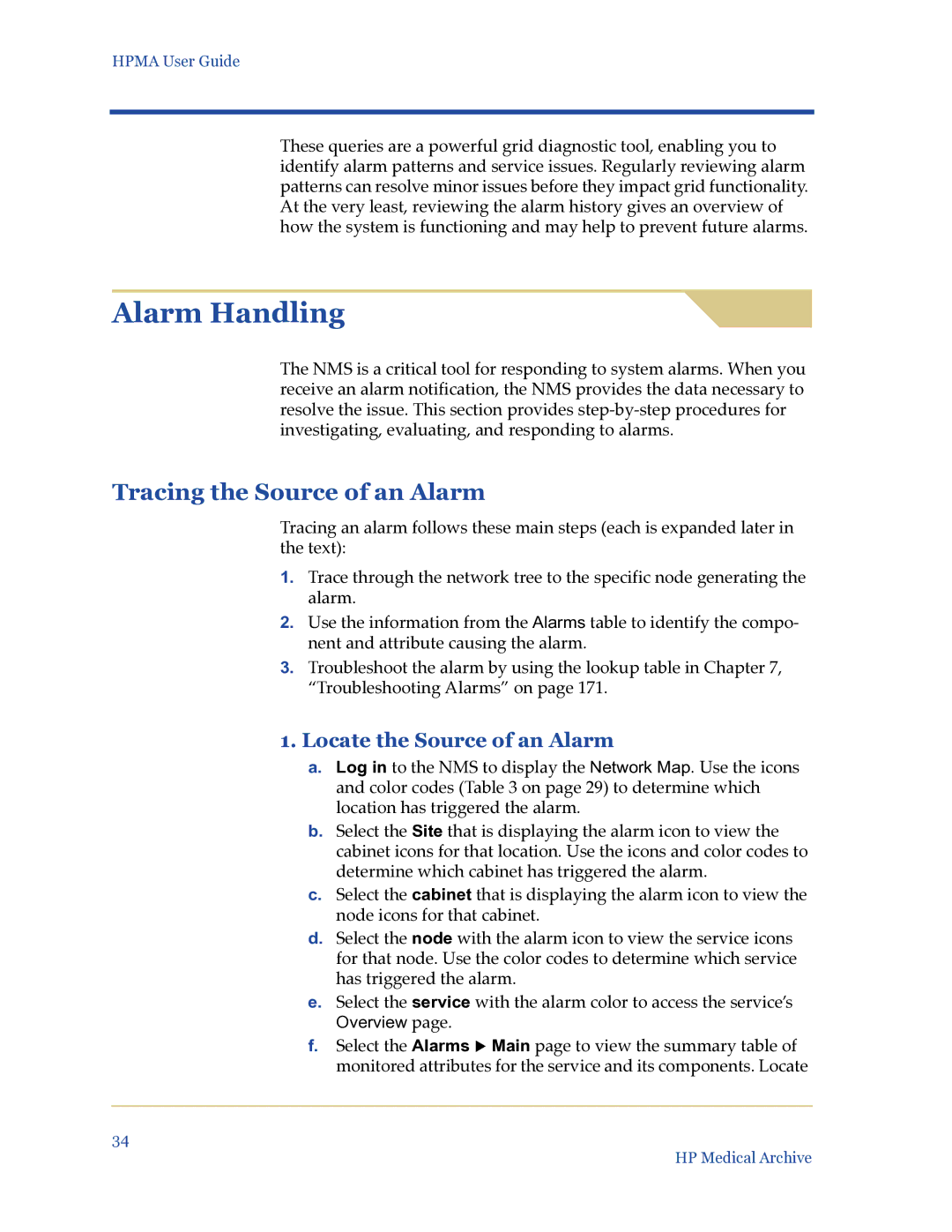
HPMA User Guide
These queries are a powerful grid diagnostic tool, enabling you to identify alarm patterns and service issues. Regularly reviewing alarm patterns can resolve minor issues before they impact grid functionality. At the very least, reviewing the alarm history gives an overview of how the system is functioning and may help to prevent future alarms.
Alarm Handling
The NMS is a critical tool for responding to system alarms. When you receive an alarm notification, the NMS provides the data necessary to resolve the issue. This section provides
Tracing the Source of an Alarm
Tracing an alarm follows these main steps (each is expanded later in the text):
1.Trace through the network tree to the specific node generating the alarm.
2.Use the information from the Alarms table to identify the compo- nent and attribute causing the alarm.
3.Troubleshoot the alarm by using the lookup table in Chapter 7, “Troubleshooting Alarms” on page 171.
1.Locate the Source of an Alarm
a.Log in to the NMS to display the Network Map. Use the icons and color codes (Table 3 on page 29) to determine which location has triggered the alarm.
b.Select the Site that is displaying the alarm icon to view the cabinet icons for that location. Use the icons and color codes to determine which cabinet has triggered the alarm.
c.Select the cabinet that is displaying the alarm icon to view the node icons for that cabinet.
d.Select the node with the alarm icon to view the service icons for that node. Use the color codes to determine which service has triggered the alarm.
e.Select the service with the alarm color to access the service’s
Overview page.
f.Select the Alarms X Main page to view the summary table of monitored attributes for the service and its components. Locate
34
HP Medical Archive
